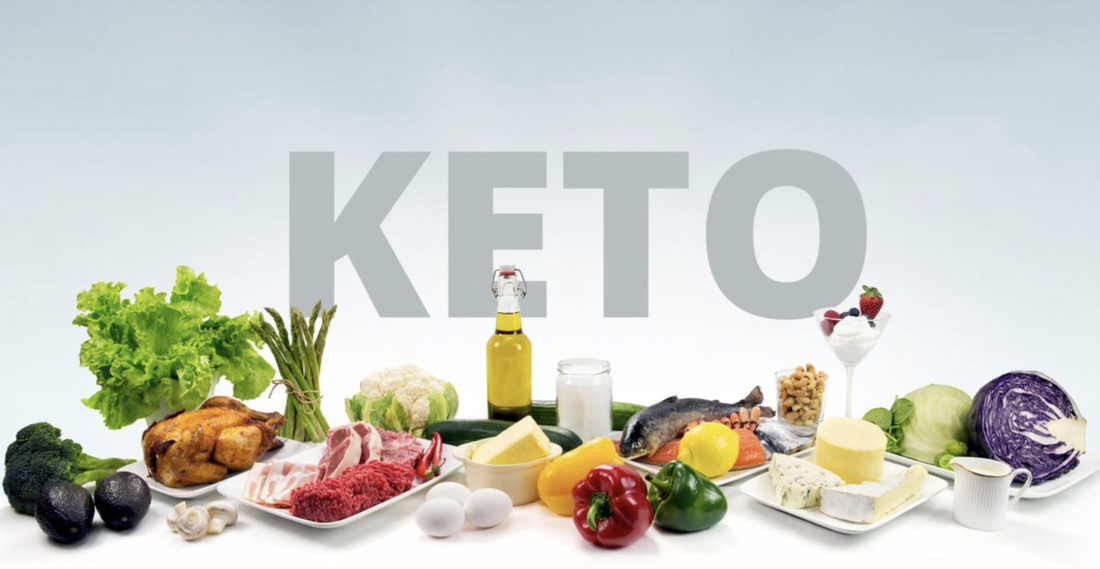After believing I was following a keto plan for nearly 2 years, I finally bought a blood testing meter and tested my blood ketone levels. I was disappointed to learn that I was not in a state of ketosis. Sure, I’d been eating very low carbs and a lot of fat. But I’d made the same mistake that many people make who think they’re doing keto – and I know now that it’s also the most common mistake: I’d been eating too much protein.
Through a process known as gluconeogenesis, our bodies convert excess dietary protein to glucose in much the same way we convert dietary carbohydrates to glucose. A true keto diet requires you to eat only moderate protein, not high protein. Too much protein and you’re defeating the whole point of keto.
Believing that a keto diet is a high-protein diet is indeed a common misconception. I often hear comments like, “I could never do keto because I could never eat all that protein”, or “I tried keto but didn’t like eating so much protein”, even “I would never do keto because I don’t eat red meat.” None of these statements are accurate because you don’t need a lot of protein and you certainly don’t have to eat red meat. Getting about 20% of your daily calories from protein isn’t difficult at all. Additionally, there are plenty of non-red meat protein sources including whole eggs, salmon and other cold water fish, dark meat poultry, and whole fat dairy products like cheese, Greek yogurt and cottage cheese. If you’re vegetarian, you can even assemble the essential amino acids for a complete protein with plant sources. Let me re-emphasize that point: the ketogenic diet is not a high protein diet, and it doesn’t require eating meat.
Let’s get back to my path towards getting on an actual keto nutrition plan. After testing my blood ketones 2 years and discovering I wasn’t in ketosis, I tweaked my diet. I reduced my protein and added more fat. Within just 2 weeks, my blood ketone levels bumped up enough to confirm that I was actually in a state of nutritional ketosis. I had been close but in reality, was still fueling myself with glucose. I was not producing ketones as my primary energy source. You may be asking, what does that mean?
The vast majority of people walking around on planet earth today are fueling themselves with blood glucose. Elevated levels of blood glucose trigger inflammation. Inflammation is closely linked to obesity and metabolic syndrome and inflammation is the root cause of many non-infectious diseases like type 2 diabetes and heart disease, and the link between inflammation and metabolic disease is being investigated in neurologic diseases such as Alzheimer’s disease, dementia, and Parkinson’s disease. If that weren’t enough, there is a proven link between inflammation, obesity and diabetes, and many forms of cancer. Prior to the domestication of agriculture, these modern afflictions were nonexistent. Sadly, their prevalence has accelerated dramatically in the last 100 years since the industrialization of agriculture and the increased consumption of highly processed foods high in sugar and refined carbohydrates. We’re in the midst of a global health pandemic.
You don’t have to succumb. Instead, you can stop elevating your blood glucose with inflammatory carbs and go keto. Your body will then switch from relying on glucose as your primary fuel source to instead producing and burning non-inflammatory blood ketones. Ketones are the alternative fuel your body produces by breaking down fats, and have a wide number of health benefits, including reduction of inflammation. You can achieve ketosis and run your body on ketones by eating a low carb, moderate protein, high fat keto diet. But, achieving true nutritional ketosis can be challenging because you may be eating too much protein or hidden carbs that can elevate your blood glucose levels and keep your body from achieving ketosis. There is only one way to know if you’re in ketosis: You’ve got to test your blood ketones. It’s also highly recommended you test your blood glucose. How do you do this? Well, there’s a great new tool that combines these measures into an easy to understand single value. It’s called Keto Score, and It’s free – anyone can sign up at https://www.ketonescore.com/user-register/
Keto Score. Measuring your blood ketones is the only way to know whether or not your body is in a state of nutritional ketosis. Urine ketone sticks (“pee sticks”) are popular and easy to use but can be wildly inaccurate. By definition, urine carries waste from our body. Peeing on a ketone stick can only tell you what you are not using – it does not tell you what’s actually circulating in your blood stream, which is the key to knowing if you are in ketosis. There are three ketone bodies; Beta-hydroxybutyrate, acetoacetate, and acetone. A lesser ketone body, acetoacetate can be detected in urine. The pee stick manufacturers claim that when your blood ketones are high some of it “spills” over into your urine. Maybe, but even if this is true, it says nothing about the actual level of your blood ketones. Pee sticks are in no way accurate. If you want accuracy and want to know if you’re truly in ketosis, then you have to test your blood with a finger prick and blood glucose and ketone meter. It’s super easy – just ask any diabetic person you know who does this many times a day in order to monitor their blood glucose levels.
If you want to know if you’re really doing keto then test your blood. If you want to take advantage of a free online tool that will help you get into and maintain ketosis then got to https://www.ketonescore.com/ and start generating our own personal Keto Score.
Yours in Health and Fitness,
JD Griffin
Author, Get Fit Lean
Founder, Keto Score

 RSS Feed
RSS Feed